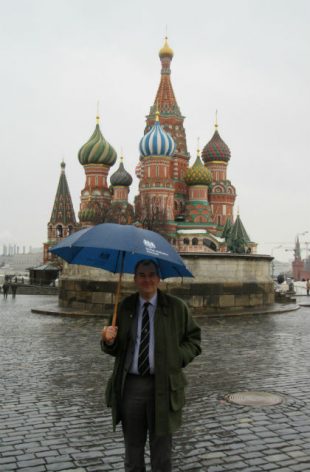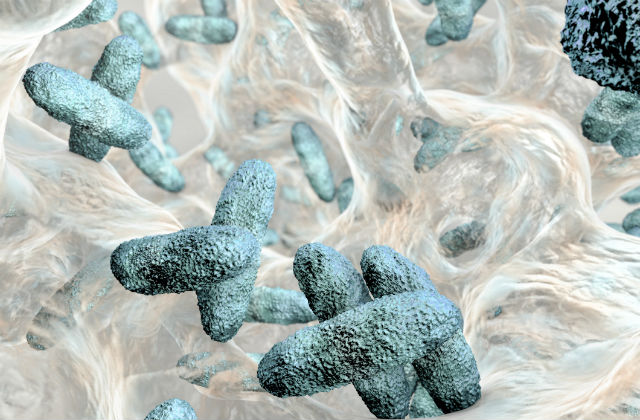
In this quote, Louis Pasteur captured very well the behaviour of an inquisitive and wise scientist. Pasteur was one of the founding fathers of microbiology, which now stands on the firm foundations he and others laid. Although progress means that the technology now available to us and our understanding of microbiology have advanced considerably, the scientific method is a constant thread under-pinning science today, just as it has always done. In this blog, I’m going to discuss a couple of instances where recent studies at Animal & Plant Health Agency (APHA) into antimicrobial resistance in veterinary bacteria have yielded extremely valuable results of great significance, which became apparent as the studies progressed.
Case 1 – colistin resistance
Our first case concerns bacterial organisms belonging to the genus Moraxella spp. occurring in pigs. Readers might be aware that a type of resistance to the antimicrobial colistin, a resistance which is transferable between bacteria, was reported two years ago in bacteria from animals and man, initially in China and then subsequently in many countries worldwide, including the UK. This resistance was due to the possession of a gene called mcr-1 which affects how colistin binds to the bacterial cell wall. If colistin cannot bind, it cannot exert its antimicrobial action on the bacterial cell and so, mcr-1 confers resistance to colistin, which is one of the antimicrobials of last resort, used in the treatment of highly-resistant infections.
In our study, colleagues at APHA examined pooled caecal contents (10 pigs per farm) from pigs at slaughter from 57 farms in 2014 and 2015 and recovered 657 Gram-negative bacteria after culture on selective media (containing antimicrobials in order to look for resistant strains) and non-selective media. Whole genome sequencing was performed on these isolates and 8 isolates belonging to Moraxella spp. contained homologues of either the mcr-1 gene or another related gene called eptA, meaning that very similar, but not identical, genes to mcr-1 and eptA were detected. In fact, six Moraxella osloensis carried eptA with 62-64.5% identity (relatedness) to mcr-1 and mcr-2, while a Moraxella porci –like isolate carried mcr-1.1 (98.7% identical to mcr-1) and a Moraxella plurinanimalium-like isolate carried mcr-2.2 (97.9% identical to mcr-2). What does this mean in practical terms? These Moraxella spp. are not well studied as they only cause disease sporadically, but the results indicated that they are the likely source of the mcr-1 and mcr-2 genes, which have “escaped” from these Moraxella bacteria, where they probably occur naturally. The results have been published in the Journal of Antimicrobial Chemotherapy, volume 72, pages 2745-2749 and this was the first published report to indicate the likely origin of the mcr-1 gene, an important finding of global significance.
Case 2 - The breadth and diversity of work performed at APHA

The second case we’ll discuss reflects the diversity and breadth of work performed at APHA and involves a bacterium called Klebsiella pneumoniae subspecies pneumoniae (Kpp). This was recovered from three different common seals recovered from the east coast of England which were undergoing treatment at wildlife rescue centres. Kpp is an interesting bacterium, because it can live in the intestinal tract of mammals (including farm animals and man), but also survives very well in surface waters. The susceptibility of the isolates to various antimicrobials was determined and a method of strain typing called multi-locus sequence typing was performed to see if they were similar to other isolates which had previously been reported. Two of the three isolates belonged to the “ST11” clone, an epidemic pathogenic clone, detected in man and found globally. All three isolates showed multiple antimicrobial resistance - unusual since wild seals should not have previously been treated with antimicrobials and the samples had been collected from the seals on their admission to the wildlife hospitals.
The findings suggested that the seals are exposed to sources of marine pollution, (probably human sewage) and that Kpp belonging to a type commonly associated with man can cause infections of traumatic or other types of open wounds from which the seals may suffer. Seals may thus be an indicator of sewage contamination and we are grateful to the wildlife rescue centres involved for submitting diagnostic samples from the affected animals. The findings were published in The Veterinary Record and were also the subject of an editorial article, which supported the authors’ conclusions.
These examples demonstrate the breadth of APHA’s work on antimicrobial resistance and also show how veterinary studies into what might initially appear to be obscure backwaters may provide evidence of global significance to both veterinary and human medicine. Thus, APHA has added to our knowledge of the origins of colistin resistance and highlighted that microbial pollution appears to be affecting free-living common seals in the North Sea, both of which are results of national and global importance.

2 comments
Comment by Mark Chambers posted on
Excellent, Chris. A really accessible and easy to follow article showing the impact APHA's research is both broad and far-reaching. Try going to Moscow in the snow next time!
Comment by Gail Wise posted on
A very good read and easy to follow Chris.Thanks